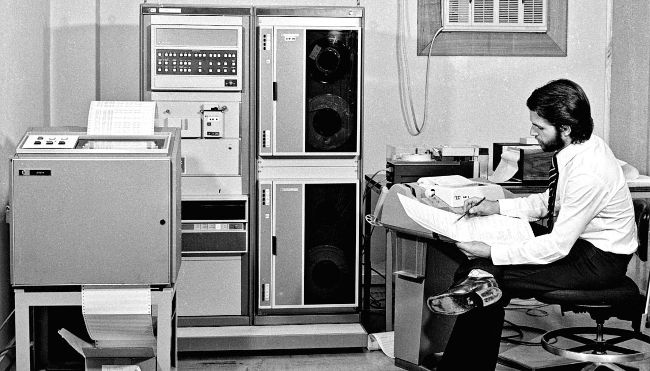The rise and fall (and rise again) of Basic
We plot the symbolic milestones of the most basic of allpurpose code with the instruction of Mike Bedford.

HP was one of the key minicomputer manufacturers of the ’70s to offer Basic, specifically on its 2100 Series machines.
H ere at Linux Format Towers, we’re always exploring programming languages, some of which date back to the late ’50s but still play important roles today. Those venerable languages are Fortran and COBOL. Here we’re engaging on a similar exercise, as we turn our attention to Basic, but the story is different. The timeline of Fortran and COBOL can be summarised as: developed back in the mists of time; enjoyed almost immediate success; accepted as a standard; several new standardised versions are introduced over the decades; currently within the top 25 spots in the TIOBE index; widely used in research and/or business today. In the case of Basic, while the first three and last two of those statements remain true, the journey is substantially different, as we’re about to see.
Although this article can be considered a history lesson – albeit hopefully more enthralling than learning the dates on which British monarchs ascended to the throne – there’s a hands-on element, too. Of course, it’s quite likely that you’ve already tried your hand at Basic programming, but there are loads of variants, so hopefully we’ll introduce you to something new and unexpected. And in one of its newer guises, you might even decide to use it for coding a real-world app.
Despite its longevity, there’s no way that Basic is going to challenge the likes of Python, Java, C and C++. Indeed, we’d be surprised if a few hackles aren’t raised at our suggestion that Basic could have any place in the world today. After all, it has come in for its fair share of criticism over the years, mainly because of the potential, in its earlier versions, it was argued, for it to promote poor programming practices. Love it or hate it, though, it’s surely good to understand this important part of our programming heritage.
The early days
Basic was launched in 1964, making it only the fifth mainstream high-level language, after Fortran, ALGOL, LISP and COBOL. And like its predecessors, it carved out its own niche. In particular, it was designed as a language for teaching beginners to program, indeed the acronym – Beginners’ All-purpose Symbolic Instruction Code – spells that out quite clearly. Created by John Kemeny and Thomas E Kurtz at Dartmouth College in New Hampshire, not only was the syntax simple, but it was also implemented on a time-CREDIT: ESO, CC BY 4.0 Deed, www.eso.org/public/images/potw1223a/
sharing system, enabling multiple users to work simultaneously. The system allowed students to enter, edit, list and run their code from remote teletype terminals. This was a far cry from submitting code as a stack of punch cards, and receiving printed output several hours later, a model that was almost universal. This primitive form of IDE would be widely adopted elsewhere as Basic migrated to other computers. However, the Dartmouth system actually compiled the code in its entirety when the user ran it, while many other Basics were implemented as interpreters, compiling each instruction as and when it was run.